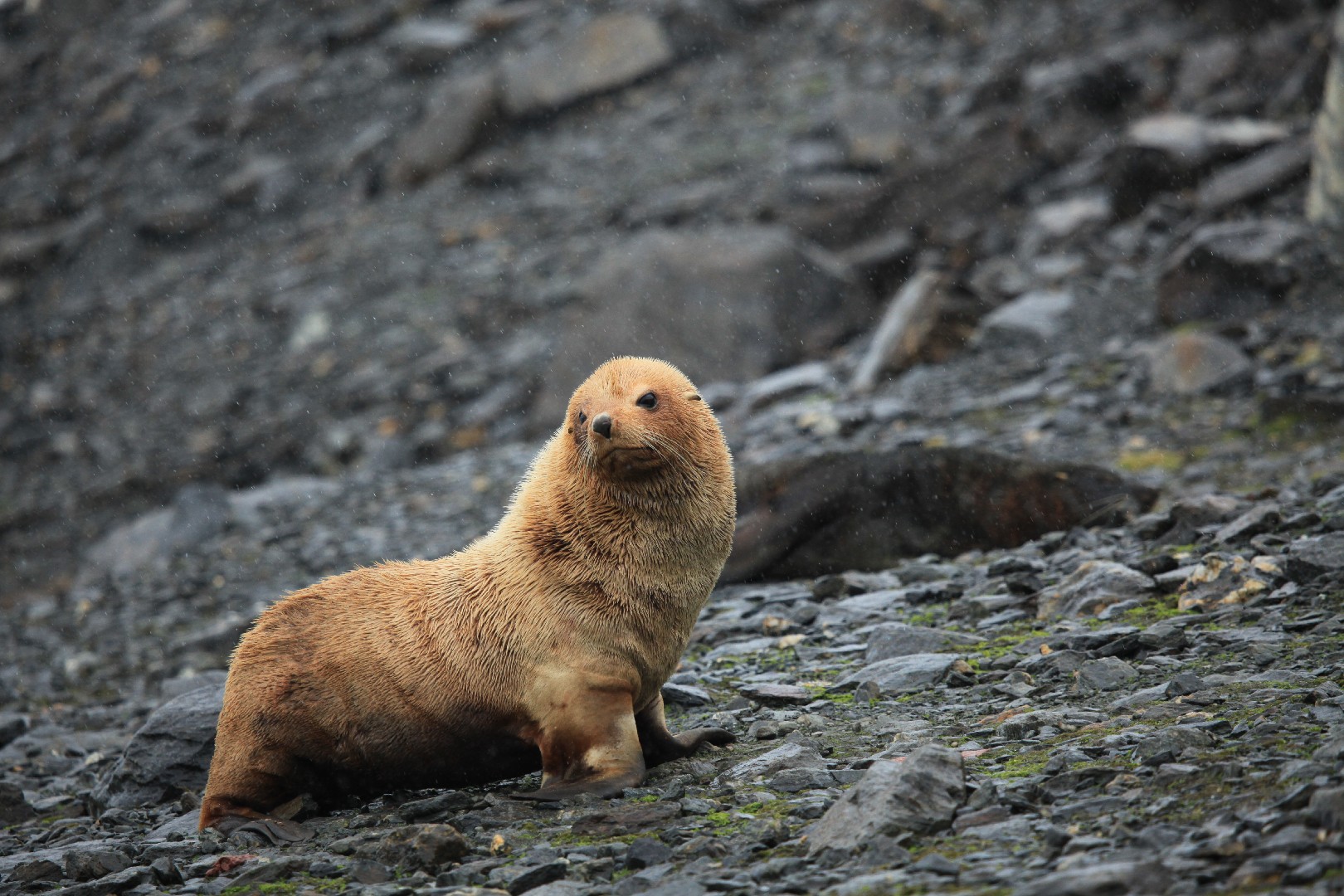Antarctic fur seal
A species of Bear head Scientific name : Arctocephalus gazella Genus : Bear head
Antarctic fur seal, A species of Bear head
Scientific name: Arctocephalus gazella
Genus: Bear head
Content
Description General Info
 Photo By Liam Quinn , used under CC-BY-SA-2.0 /Cropped and compressed from original
Photo By Liam Quinn , used under CC-BY-SA-2.0 /Cropped and compressed from original Description
This fur seal is a fairly large animal and has a short and broad snout compared with others in the family. Adult males are dark brown in colour. Females and juveniles tend to be grey with a lighter undersides. Colour patterns are highly variable, and some scientists believe some hybridisation with subantarctic fur seals has occurred. Pups are dark brown on birth, almost black in colour. About one in 1000 Antarctic fur seals are pale 'blonde' variants. Males are substantially bigger than females. Antarctic fur seals grow up to 2 m (6.5 ft) long and weigh 91 kg (201 lb) to 215 kg (474 lb). Males live for about 15 years and females up to 25. Antarctic fur seals appear to act alone when foraging and migrating. Males breed polygynously; a strong male may have more than a dozen female partners in a single season. Territories are established on breeding grounds in October to early November, when the musty-smelling males are extremely aggressive in defence of their harems. Females gestate for just over a year – giving birth in November or December. Pups are weaned at about four months old. Juveniles may then spend several years at sea before returning to begin their breeding cycles. The usual food supply is krill and fish, of which each Antarctic fur seal eats about a ton in a year. Due to the enormous and growing populations of these seals, their food is a significant proportion of South Georgia's krill and fish stocks. 
General Info
Lifespan
15-22 years
Diet
Antarctic fur seal predominantly feeds on Antarctic krill, supplemented by squid and fish. This species dives deep into the ocean, up to 180m, to catch prey even under thick ice layers.
Appearance
The antarctic fur seal is a medium-sized seal, streamlined in shape with a robust body and long, flippers. Its fur is dense and warm, primarily dark brown, but becomes silver-grey on the belly area. Males, larger than females, exhibit a mane of coarse, longer fur on the neck and shoulders. Pups are distinctly different with blackish-brown coat that changes into adult coloration as they grow.
Behavior
Antarctic fur seal are highly social, forming dense aggregations on land during breeding season. They display pronounced diving behavior, capable of reaching depths of over 200 meters to forage on krill and other small crustaceans. Males exhibit territoriality, defending breeding spaces via physical confrontation.
Population
Decreasing
Scientific Classification
Phylum
Chordates Class
Mammals Order
Carnivores Family
Eared seals Genus
Bear head Species
Antarctic fur seal